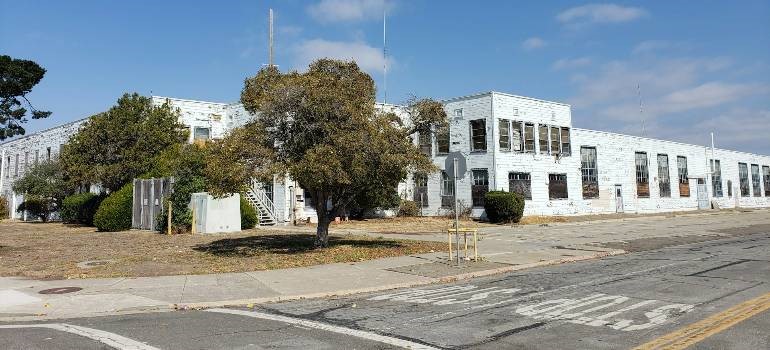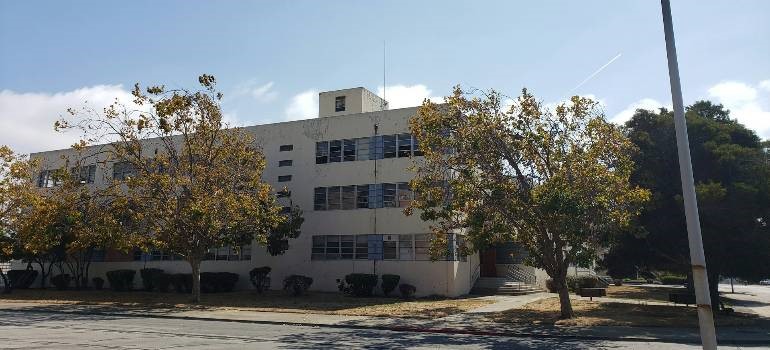If you’re thinking about moving to Alameda CA, you're in for a treat. This charming island city sits right across the bay from San Francisco, offering a small-town feel with easy access to the hustle and bustle of the Bay Area. Whether you're drawn to its Victorian homes, beautiful waterfront views, or just the unique vibe of island life, Alameda has a lot to offer. But moving to a new city, especially one in the Bay Area, can bring its own set of challenges. What’s the traffic really like? How about parking or finding a place to live? And what neighborhoods are the best for you? Don’t worry, we’ve got you covered! If you're looking for a trustworthy moving service, consider reaching out to Upline Moving CA, one of the top moving companies in the Bay Area.
Getting to know Alameda’s layout and key neighborhoods
So, let’s start with the basics. Alameda isn’t just one neighborhood—it’s a whole island with its own character. You’ve got Alameda Island and Bay Farm Island, each with its own feel.
- East End: This part of town is great if you love charming older homes and tree-lined streets. It’s close to downtown, making it easy to get around. Plus, if you’ve got kids, you’ll appreciate the parks and schools in the area.
- West End: Over here, you’ll find a mix of modern developments and older homes. This neighborhood has some great spots for shopping, like the South Shore Center, plus easy access to the beach. If you’re a fan of living near the water, this might be the spot for you.
- Gold Coast: If you're looking for more space and a view, the Gold Coast is the place to be. Think large, beautiful homes with panoramic views of the Bay and San Francisco skyline. It’s one of the more upscale areas in Alameda.
- Bay Farm Island: Looking for something quieter and more suburban? Bay Farm Island might be calling your name. It’s less busy than Alameda Island, with more parks and waterfront paths, making it perfect for families or those who enjoy nature.

Choosing the right neighborhood depends on your lifestyle. Are you more into the hustle and bustle of downtown, or would you prefer a quieter, more suburban setting? The good news is, whatever you choose, you’ll be close to water and have plenty of charm to enjoy.If you're planning to move large furniture, don’t hesitate to reach out to furniture movers in Bay Area. They’ll ensure your move goes smoothly, no matter what you need to bring with you.
What to expect from the housing market
Alameda’s housing market can be a bit competitive, especially if you're looking for a single-family home. With median home prices hovering around $1.2 million, it’s on the higher end compared to other Bay Area cities. Renting? You’ll be looking at about $2,500 to $3,000 for a one-bedroom apartment, with prices going up in the more desirable neighborhoods.
But don't let the numbers discourage you! While Alameda has some steep prices, it’s still a great value when compared to the prices in San Francisco and even Oakland. And the variety of homes is impressive—whether you’re drawn to the historic charm of older Victorians or the sleek modern homes popping up near Alameda Point, you’ll find something that suits your style.

The key to securing a place here is to be proactive. The rental market can be tight, and the competition for homes is real, especially during peak moving months in summer and early fall. So, if you’re eyeing a specific spot, get your application in quickly. And for those looking for additional storage options, Alameda and the surrounding Bay Area have a variety of storage units to help you keep your things safe as you settle in.
Choosing the right neighborhood for your lifestyle
When deciding where to live in Alameda, consider several factors that might affect your daily life. The city's neighborhoods offer different amenities, commutes, and atmospheres, so it's essential to evaluate what matters most to you.
- If you're planning to commute to San Francisco, you’ll love the ferry service from Alameda to the city. It’s fast, scenic, and avoids the hassle of driving across the bridge. However, ferry rides can get crowded during peak hours, so it’s something to keep in mind.
- On the flip side, if you're working in Oakland or just need easy access to highways, some neighborhoods in the West End or near the bridges might be more suitable.
- Speaking of commuting, it’s good to know that traffic in Alameda can get heavy, especially around the bridges and ferry terminals.
- Parking, too, can be a challenge, particularly in the busier neighborhoods. If you’re planning to live near Park Street or the ferry terminals, it’s worth considering whether you’re okay with the tight parking spots and crowded areas. It’s always a good idea to test out the area at different times of the day to get a feel for what your daily commute might look like.

Looking to move into an apartment? Apartment movers in Bay Area specialize in making the moving process easier for those settling into urban spaces, making your transition smoother.
Moving to Alameda CA: The right time and the logistics
When it comes to moving to Alameda CA, timing is everything. If you’re moving during the summer or early fall, be prepared for a busy housing market. People tend to move more during these months, and the demand for rental units is higher. You also want to keep in mind that Bay Area traffic can be unpredictable, so picking the right time of day for your move is important. The I-880 and I-580 can get clogged, so it’s best to schedule your move for early morning or late afternoon to avoid the worst of the rush.
And don’t forget about the weather. While Alameda enjoys mild temperatures, you might run into fog and rain, especially in the winter months. If you're not used to the cold, pack accordingly. Even in the summer, the Bay Area can surprise you with cool mornings and fog, so plan for a bit of a chill during your move-in day. For those looking to get prepared for your move, moving supplies in Bay Area can help you stock up on everything you need—from boxes to packing materials—making the process smoother.
Navigating the bridges, tubes, and official truck routes
Alameda’s unique geography means that you’ll be crossing bridges or tubes to get in and out of the city. Alameda is connected to Oakland via several major routes, including
- the Park Street Bridge
- High Street Bridge
- the Posey and Webster tubes
These routes serve as the primary access points for vehicles moving into and out of Alameda. If you're using a moving truck, it’s crucial to know which routes are accessible for large vehicles. Alameda’s truck route map highlights which streets allow large trucks and where you may face detours. While the Posey and Webster tubes are vital, they are not always truck-friendly and can close for maintenance, so it’s important to plan your route accordingly.

Make sure your moving company is familiar with Alameda's specific truck routes and access points to avoid delays. Provide them with the official route links in advance. If you’re in need of expert help for your move, consider contacting movers in Alameda CA, a team that specializes in local logistics and can navigate the area with ease.
Parking, permits, and loading zones to be aware of when moving to Alameda CA
When it comes to moving in Alameda, finding a parking spot for your moving truck can be tricky, even with the help of the most experienced of the local moving companies in Bay Area. Some areas have narrow streets, and if you're not careful, you might block traffic. Luckily, the city offers No Parking Sign Permits, which let you reserve a space for your truck. Be sure to apply for these permits well in advance to avoid any last-minute surprises.
Certain residential areas, especially near ferry terminals or popular neighborhoods, may have permit-only parking zones. So, be sure to check the parking regulations for your new neighborhood. If you’re moving to a more crowded area, you might also need to consider using smaller trucks or shuttle services to navigate tight spots.
Working with movers who know Alameda
Choosing the right moving company is crucial when relocating to Alameda, CA. Since the city’s roads can be narrow, and bridge and tunnel closures are common, it’s important to work with movers who are familiar with the area. A local company will know the best routes, permits required, and potential traffic delays.
Before hiring a moving company, ask them about their experience with Alameda. Do they know how to navigate the Posey and Webster tubes? Are they familiar with the local parking regulations? If you want to avoid issues on move-in day, it’s best to hire a company that knows the area well. For those planning a long-distance move, be sure to look into the best moving companies for long distance that specialize in stress-free relocations across California and beyond.
Planning for schools, kids, and family logistics
If you’re moving with kids, you’ll want to know what’s available in terms of schools, parks, and other family-friendly activities. Alameda is served by the Alameda Unified School District, which is known for its strong academic reputation. The East End is particularly popular for families due to its proximity to schools, parks, and other amenities.

Beyond schools, Alameda offers plenty of parks, playgrounds, and recreational areas. From the waterfront paths on Bay Farm Island to the family-friendly beaches, there’s no shortage of outdoor activities for the little ones. Plus, Alameda’s healthcare services are top-notch, so you won’t have to worry about finding a good pediatrician or family doctor.
Setting up your home and getting to know the area after moving to Alameda CA
Once you’ve found a place to live, the next step is setting up utilities and services. Alameda offers a mix of providers, but Alameda Municipal Power covers electricity, while PG&E handles gas. Water, trash, and recycling are also managed by the city, with convenient curbside collection.
You’ll also want to set up internet and cable services, which are widely available throughout the city. However, certain areas might have limited options for high-speed internet, so it’s worth checking with providers in advance. Don’t forget to update your voter registration and vehicle records with the DMV once you’re settled in.
Everyday transportation and commuting from Alameda
Alameda is well-connected by public transportation, with AC Transit buses serving both Alameda Island and Bay Farm Island. Buses connect to BART stations in Oakland, which makes commuting to other parts of the Bay Area a breeze.

The ferry service to San Francisco is another option that many residents use. It’s a quick and scenic ride, though during peak hours, it can get a little crowded. If you’re used to biking, Alameda is also known for being a bike-friendly city with plenty of paths.
Accounting for earthquakes, older buildings, and storage needs
Alameda, like much of California, is in an earthquake-prone area. If you're moving into an older home, be sure to ask about seismic retrofitting and other earthquake safety measures. Many of the older Victorian homes have been retrofitted, but it’s always good to check the policies about earthquake preparedness in the Bay Area.
Your new life in Alameda awaits
Moving to Alameda CA, may come with its challenges, but with the right planning, it can be an exciting new chapter in your life. From choosing the best neighborhood to navigating the bridges, tubes, and parking rules, you’ll be well-prepared with the right information. Start planning early, secure permits, and choose reliable movers who know Alameda’s roads and bridges. With its welcoming community, beautiful homes, and easy access to both San Francisco and Oakland, Alameda is a great place to call home. Now that you know the ins and outs of Alameda, it’s time to get started!
Tags
Subscribe to Upline Moving's Blog









